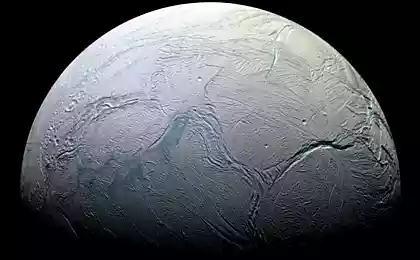1328
"Cassini" captures the change of seasons on Titan

In these images taken by the American space probe "Cassini", we see the concentration of high-altitude fog, as well as a vortex that materializes at the south pole of Titan.
All these are signs that in the largest moon of Saturn has seasons.
"The structure inside the vortex resembles an open cellular convection, which can often be seen on the Earth's oceans - said Tony Del Jenny from the Institute of Space Studies of NASA. Goddard. - But unlike Earth, where such layers are deposited just above the surface, where they are located at very high altitudes. Perhaps it is a reaction to the stratosphere of Titan's southern hemisphere seasonal cooling. However, it is too early, so we're not sure ».
"Cassini" first saw the "cap" of the high-altitude fog and vortex (the latter is a lot of gas swirling around a pole) at the north pole of Titan in 2004, when only arrived in the Saturnian system. At that time it was winter in the north.
Now, although the northern "cap" remains, the circulation in the upper atmosphere is displaced as a result of cooling the south pole. This movement, it seems, is there downwelling and formation of high-altitude fog and vortex.
Camera "Cassini" operating in visible light, the difference the first signs of emerging haze in March, and the spectrometer, dealing with the visible and infrared bands, got her picture 22 May and 7 June. Last discovered that aerosols are concentrated about 300 km above the surface of Titan's south pole. "We've never seen aerosols at such a height, it's something new," - admits Christoph Hundreds of NASA Jet Propulsion Laboratory.
In addition, the fog was imaged in visible light during long-span by Titan on June 27.

Image in false color, shows the development of "cap" over the south pole of Saturn (orange), that is, the haze at high altitude. The photos were taken May 22 and June 7, 2012 spectrometer operating in the visible and infrared ranges. Red, green and blue colors indicate the wavelengths characteristic of the stratosphere, the troposphere and surface respectively. (Image NASA / JPL-Caltech / University of Arizona / LPGNantes.)
Slater isolator operates at room temperature
Butterfly star, uoblichiinnaya Space Telescope "Herschel"























